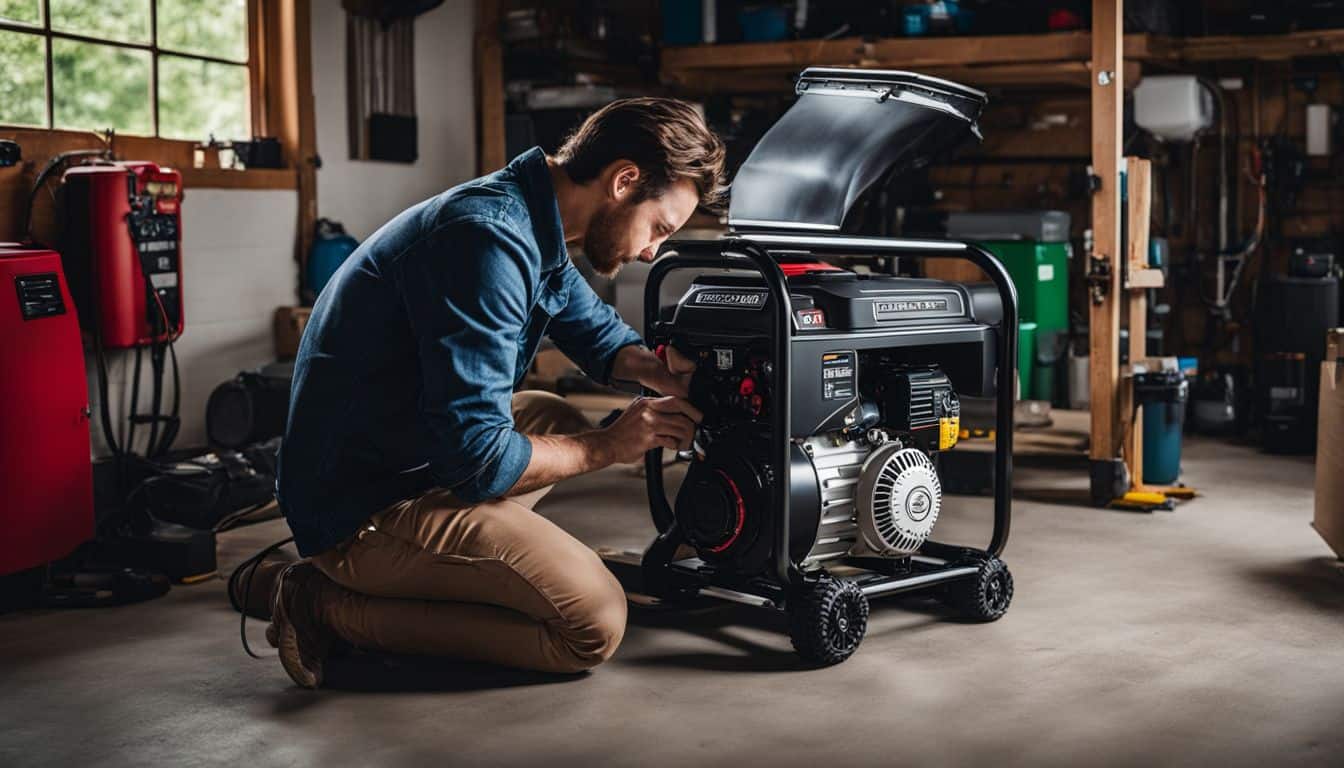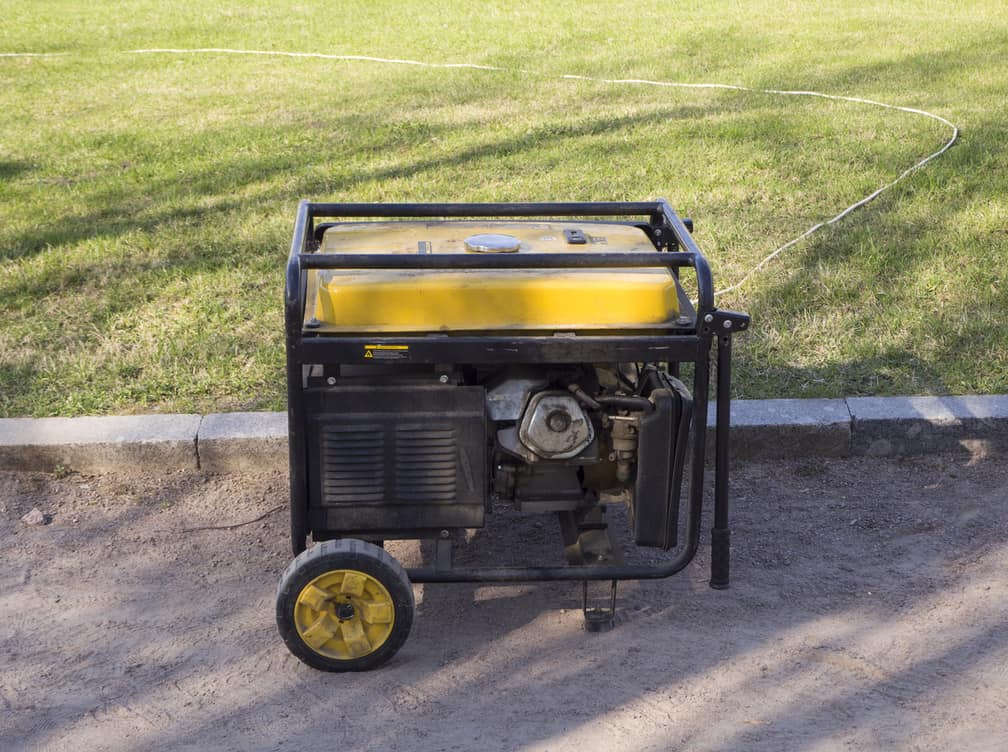Proper storage of your portable generator is crucial for ensuring its reliability and longevity. While understanding the basics of portable generators is essential, knowing how to store them correctly can prevent costly damage and ensure they’re ready when needed most. This comprehensive guide will help protect your investment and maintain its readiness for emergencies.
Pre-Storage Preparation
Before storing your generator, several critical tasks must be completed to ensure proper preservation. Start with a thorough inspection for any damage, loose connections, or worn parts that need attention. Clean the entire unit, paying particular attention to cooling vents and engine components. This basic essential maintenance for portable generators helps prevent corrosion and ensures reliable operation when the unit is needed again.
The preparation process should include a detailed cleaning of all external surfaces, removing any dirt, oil, or debris that could trap moisture and lead to corrosion during storage. Pay particular attention to electrical connections and control panels, as these areas are especially susceptible to corrosion damage.
Fuel System Management
Fuel system care represents one of the most critical aspects of generator storage. For short-term storage (less than 30 days), add a quality fuel stabilizer to a full tank of gas and run the generator for 10-15 minutes to distribute the treated fuel throughout the system. This prevents fuel degradation and protects fuel system components from the damaging effects of modern ethanol-based fuels.
For long-term storage, completely drain the fuel system to prevent varnish formation and carburetor problems. Start by emptying the tank using a siphon pump, then run the generator until it stops to remove fuel from the carburetor. Store any remaining fuel in an approved container away from living spaces. This thorough approach prevents varnish formation in the carburetor and fuel lines, ensuring easier starting when the generator is needed again.
Location Requirements
Choosing the right storage location is crucial for generator preservation. The ideal space should be cool and dry to prevent rust and corrosion while offering adequate ventilation to prevent fuel vapor accumulation. Temperature stability plays a significant role in preventing condensation, which can lead to internal engine damage and electrical system problems.
Never store generators inside homes or attached garages, as residual fuel vapors can create hazardous conditions. Instead, choose a detached structure with good ventilation and temperature control. The storage area should also be secure from unauthorized access and protected from extreme weather conditions that could damage the generator.
Protective Measures
Protection during storage goes beyond just covering the generator. Use a breathable generator cover to protect against dust while allowing air circulation to prevent moisture buildup. Position the unit off the ground on a platform or pallet to prevent moisture absorption from concrete floors, which can lead to rust and corrosion of vital components.
Environmental controls in the storage area can significantly impact generator preservation. Consider using a dehumidifier in humid climates to maintain optimal storage conditions. Ensure adequate spacing around the generator for proper ventilation and easy access for monthly maintenance checks, which are crucial for long-term reliability.
Maintenance During Storage
Even during storage periods, generators require regular attention to maintain their readiness for use. Monthly maintenance should include starting and running the generator for 30 minutes under load to keep internal components lubricated and prevent fuel system issues. This regular exercise also helps verify proper operation and maintains battery charge levels.
Consider using a trickle charger to maintain optimal charge levels during extended storage periods for generators with batteries. Regular battery maintenance prevents sulfation and ensures reliable starting when the generator is needed. Check all electrical connections monthly for signs of corrosion and clean and protect them as needed.
Seasonal Storage Considerations
Winter storage requires additional preparation in cold climates to prevent damage from freezing temperatures. Consider removing and storing the battery in a temperature-controlled environment to avoid damage and to maintain charge. If applicable, ensure all water is drained from the cooling system and protect against freezing temperatures that could crack engine blocks or damage other components.
Summer storage focuses on heat and humidity protection, which can be equally damaging to generator components. Ensure adequate ventilation to prevent heat buildup, and consider using desiccant products in high-humidity environments to control moisture levels around sensitive electrical components.

Storage Duration Guidelines
Different storage durations require varying levels of preparation and maintenance. Short-term storage (1-3 months) focuses on fuel stability and regular exercise, while medium-term storage (3-6 months) may require more extensive preparation, including fuel system drainage and battery removal.
Long-term storage (6+ months) demands the most thorough preparation, including complete fuel system drainage, oil changes, and comprehensive protection of all openings to prevent contamination or corrosion. Regular inspections become even more critical during extended storage periods to catch any developing issues before they cause significant damage.
Conclusion
By following these comprehensive storage guidelines, you can ensure your generator remains ready for service when needed. Remember that proper storage is an investment in your generator’s reliability and longevity, potentially saving significant repair costs and ensuring availability during critical situations. Regular maintenance checks and proper storage conditions will extend your generator’s life and maintain its performance capabilities for years to come.











Leave a Reply